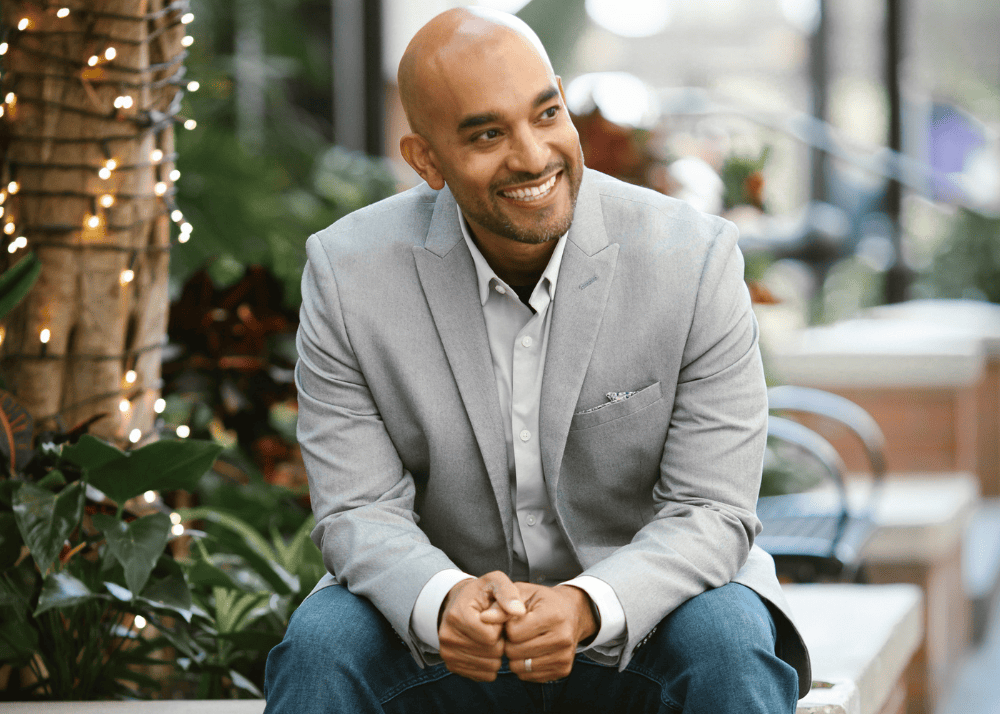Stephen A. Hart isn't just a podcaster, coach, and speaker - he's a strategist who understands the power of diversification. Whether it's career moves, income streams, or marketing, his philosophy is rooted in "cooking on multiple burners." His approach isn't about doing everything - it's about knowing your message and intentionally showing up across multiple platforms to create a cohesive, impactful presence.
We caught up with Stephen to talk about how professionals and brands can apply this philosophy to marketing, why LinkedIn content needs a fresh perspective, and what marketers should be doing with AI right now.
You've talked about "cooking on multiple burners." How does that apply to marketing strategies for individuals and brands?
This idea of cooking on multiple burners is the foundation of how I live, build, and coach others. I created BeyondOne, a mission-driven community that helps professionals move beyond relying on a single paycheck by developing multiple income streams.
The same principle applies to marketing. Too often, individuals and brands pour all their energy into one platform, one tactic, one product, or one identity. In today's environment, I believe visibility and growth come from diversifying your presence strategically.
That doesn't mean doing everything, everywhere. It means knowing your core message and then showing up intentionally across the right channels and formats that support your goals.
I'm a podcaster, a marketing and branding coach, a speaker, a web developer, a LinkedIn Profile expert, and more. But, those aren't separate lanes. They're different burners serving the same meal: helping professionals and brands take control of their income and future.
Your marketing should follow the same logic. It shouldn't be a random mix of posts-it should be a multi-burner system, all working together toward a clear result.
So yes, cook on multiple burners. But make sure every burner is part of the same kitchen, serving the same dish. The masterclass I'm hosting teaches more about this concept and how marketers and entrepreneurs of all kinds can apply it.
What's the best piece of content marketing you've ever seen?
Steven Bartlett's The Diary of a CEO is one of the best business podcasts out there. His content is valuable, engaging, and keeps you coming back for more.
His guests are industry giants, sharing insights for free that many would pay thousands to learn. His obsession with details, analytics, and continuous improvement is inspiring. The attention to detail is amazing as Steven and his team aim to optimize the show to create value for his audience.
While The Diary of a CEO is available everywhere, Steven focused on growing his show on YouTube. Now, he has more than 10 million subscribers and runs an eight-figure independent podcast network.
What kind of content should marketers start creating right away? And what should they stop?
Start: Vertical video, 30-60 - 90 seconds in length. It's what the biggest social platforms and their algorithms crave-think YouTube Shorts, LinkedIn, Instagram Reels, TikTok.
Stop: Bad content. Content that doesn't immediately address a real problem your audience wants solved. Fluffy, confusing content will lose people fast. If you confuse, you lose.
How should marketers be using AI right now?
Gen AI is a marketing tool - the most powerful one ever created. But it's a back-of-the-house tool.
Marketers should leverage AI to help them be more efficient. Use it for brainstorming, SEO research, initial drafts of copy and video scripts. Tools like ChatGPT are great for first drafts, but they require effective prompting and human refinement. Marketers need to help train the tools on the voice, tone, style, and the right information to understand who the content is intended to speak to.
I also use AI tools like Descript for video and podcast editing. That efficiency allows me to price services affordably while serving more clients.
What's the biggest misconception about LinkedIn content today?
That it has to be stuffy, business-only content.
Yes, LinkedIn is for networking and visibility, but people buy you. You need to show up as yourself to stand out from the sameness-especially now with the flood of AI-generated content.
Some of my biggest LinkedIn posts weren't about marketing. They highlighted my role as a dad (I'm in a constant pursuit of becoming the best dad ever for our two kids), husband, immigrant, and community leader. Those things don't directly showcase my expertise, but they tell a prospect more about me and build deeper connection and trust.
You also give advice on goal-setting and fulfillment. What's the most useful advice you give?
Be okay with being bad until things start to get good.The best things happen in that messy middle. Don't run at the first sign of failure.
The first time I went live on LinkedIn, I bombed. I thought I was talking for five minutes but it turns out I was on mute the whole time. Embarrassing. But I stuck with it.
Within a year, I was promoted twice to Senior Marketing Leader overseeing Content Marketing at SANS. I was also accepted into LinkedIn's inaugural Creator Accelerator Program.
Now, four years later, I get paid thousands of dollars a month to help experts create video content for their brands.
Stick with it. Improvement comes through discipline.
Bravo, Stephen! More insights and experts in content marketing coming soon to The Hook. Follow us on LinkedIn.


